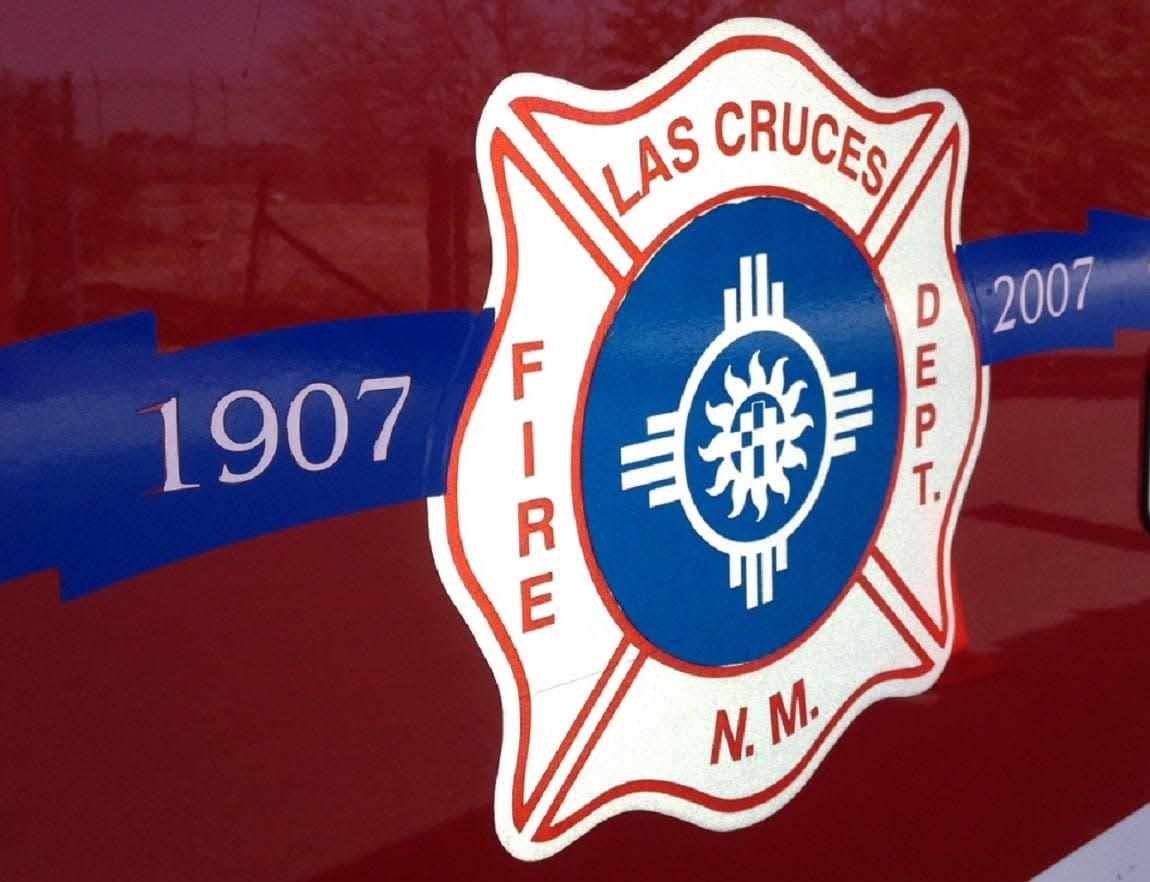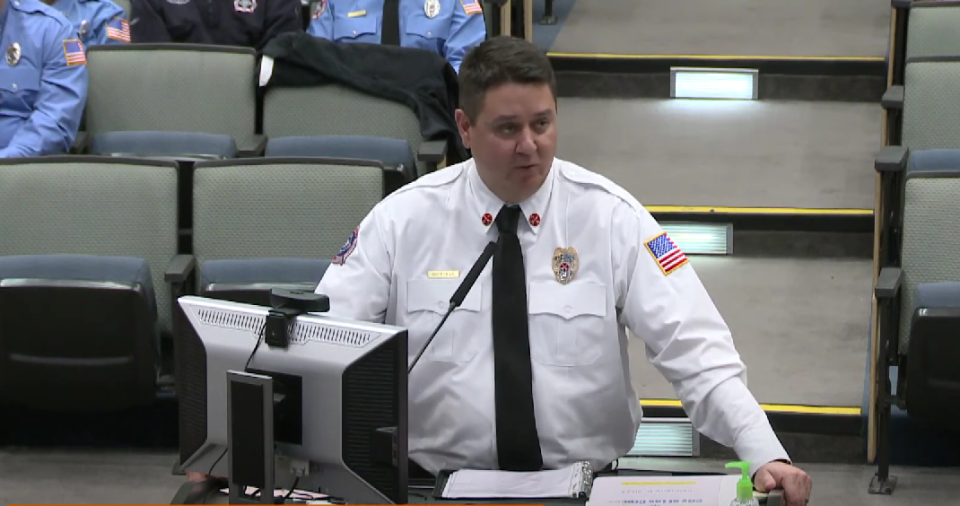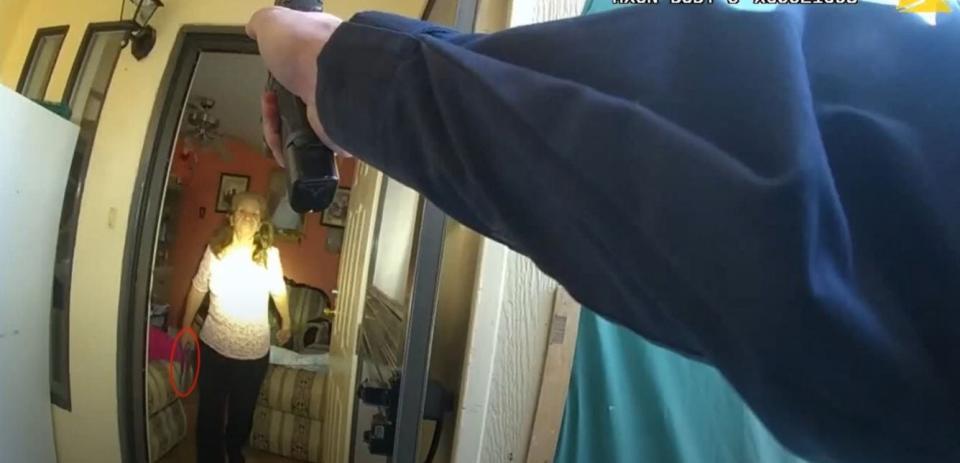The City's crisis-response team launches in March. Here's what to know about Project LIGHT

LAS CRUCES – Fire officials announced Monday the launch of long-anticipated Project LIGHT, the department's new crisis-response team.
Project LIGHT (Lessen the Incidence of Grief, Harm and Trauma) launches on March 6. The team is meant to provide residents with intervention for mental health crises and connect people with resources.
Unlike similar programs in other states, LIGHT is not an alternative to a police response. Instead, the LIGHT works alongside the cluster of first responders that respond to an emergency.
After a hiring blitz last year and an influx of federal funding, two LIGHT teams consisting of first responders and licensed social workers will begin responding next month.
Here's everything we know about the project one month before its launch.
What LIGHT does – and doesn't do
According to Battalion Chief Mathew Hiles, LIGHT will operate through the 911 system – not the new 988 system.

"The LIGHT team will provide in-felid de-escalation," Hiles said.
Hiles said that the team would perform trauma-informed interventions – or interventions accounting for a subject's traumatic background. In practice, Hiles said that means talking people through crisis, providing education on disorders or medications, linking people with community resources, and transporting them to mental health centers like a hospital or the Crisis Triage Center.
"It's not always going to be transportation to the emergency department," Hiles said. "That's not always what they may need."
Hiles said the team's response is limited to emergencies and incidents within city limits. Additionally, if a person refuses care, the LIGHT team must leave them be.
It's also not a 24-hour operation.
Instead, LIGHT will operate Monday to Saturday from 8 a.m. to 7 p.m. Hiles said the department chose this time frame because data shows the highest call volume during those times.
Data, anecdotes show need for service
A cursory scan of the local news media quickly reveals the worst-case scenario of a mental health crisis meeting an armed police response.

Whether in the killing of Amelia Baca – a 75-year-old woman with dementia who an officer killed 38 seconds after contacting police – or Carlos Gamboa – a 57-year-old man who deputies negotiated with for several minutes before Gamboa fired on them – high-profile incidents are well known in the community.
But Hiles pointed out that first responders and police interact with hundreds of people in crisis in a typical year.
In 2022, Hiles said LCPD responded to 1,070 behavioral health calls. The same year, LCDF responded to 154 suicide attempts and 542 overdose calls.
"These numbers are big," Hiles said.
Once launched, LIGHT teams will respond to overdose and suicide calls alongside other LCFD and LCPD units that already respond to those emergencies.
Who's on the team
Project LIGHT falls under the fire department, although it's primarily funded by federal money.
Hiles will oversee LIGHT and its four employees. The project works alongside the department's already established Mobile Integrated Health unit, which holds several employees that might assist LIGHT's work.
During a presentation on Monday, Hiles went over the work history of LIGHT's four first responders and its case manager.
Allison Stoner – who holds a licensed master's in social work degree after graduating from New Mexico State University in 2021 – has worked within LCDF since 2020, according to Hiles. She led the Opioid Overdose Outreach program and served as a Peace Corps volunteer in Ukraine.
Mendy Fowler – who also holds a licensed master's in social work degree – has been with LCDF since 2021. Fowler's had experiences in in-patient/out-patient care and palliative (end-of-life) care. Before LCDF hired Fowler full-time, she worked with the department as an intern in 2020.
Myke Torres joined LCDF in 2016. In 2019, he became a licensed paramedic with the department.
Korina Jimenez joined LCDF in 2016 and became a licensed paramedic in 2019.
Wes Smith is LIGHT's case manager. He holds a master's degree in Public Administration obtained from NMSU. Hiles said Smith has experience working with elderly and disadvantaged communities for eleven years, including with Community of Hope.
How is LIGHT funded?
At least for now, Project LIGHT is funded with federal dollars. The money was earmarked by the Democratic members of the state's federal delegation in last year's Omnibus Appropriations bill.
In all, federal lawmakers sent about $1.1 million to the city's fire department to launch LIGHT and bolster similar programs. But that funding is not permanent but will take effect in the next year's fiscal budget. However, multiple councilors expressed support for LIGHT's continuance.
LIGHT's future funding will likely be a topic of discussion during this year's budget cycle.
How will the City know it's a success?
Hiles said that LIGHT would be keeping a close eye on the number of calls that require its presence.
He said they want to know data like where it is called out to, what times of day service is most often requested, how often people refuse the team's service, and what partnerships provide the most value to the team.
What hurdles remain?
Next up, Hiles said the team meeting with community stakeholders like Families and Youth Innovations Plus, Peak Behavioral Health, the hospitals and the Crisis Triage Center.
"Being on the same page and understanding what we're there for – and where they can fall in place with us, and we can fall in place with them – is huge," Hiles said.
Hiles said LCDF is also developing agreements with the stakeholders called memorandums of understanding outlining shared responsibilities and expectations. On March 2, the team will host an open house for the stakeholders to provide another round of input before the launch.
Over the next month, Hiles said dispatchers would train to know when to loop in LIGHT while the team finalizes its protocols. And on March 6, the team goes live.
Justin Garcia covers crime, courts and public safety. He can be reached via email at JEGarcia@lcsun-news.com.
This article originally appeared on Las Cruces Sun-News: City to launch Project LIGHT in March. Here's what to know

